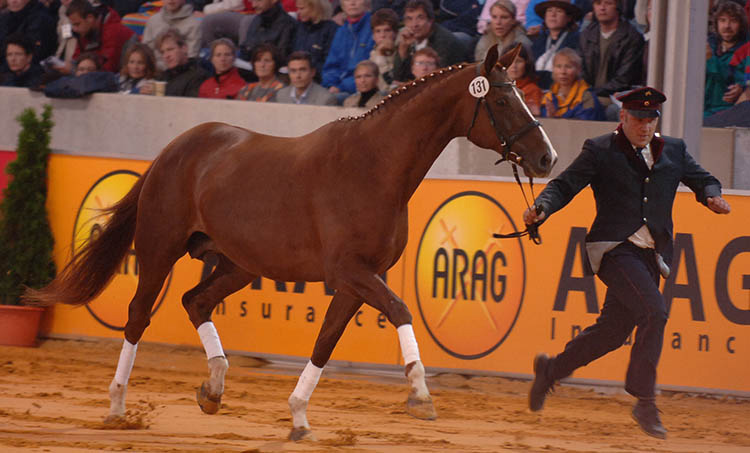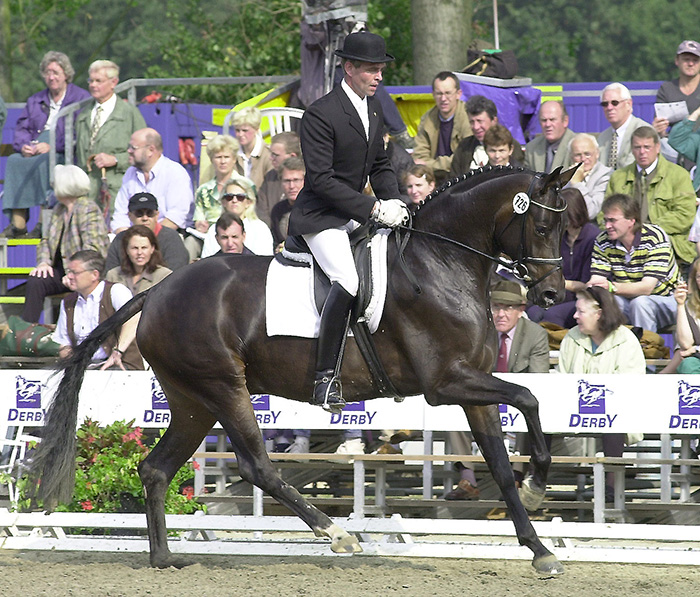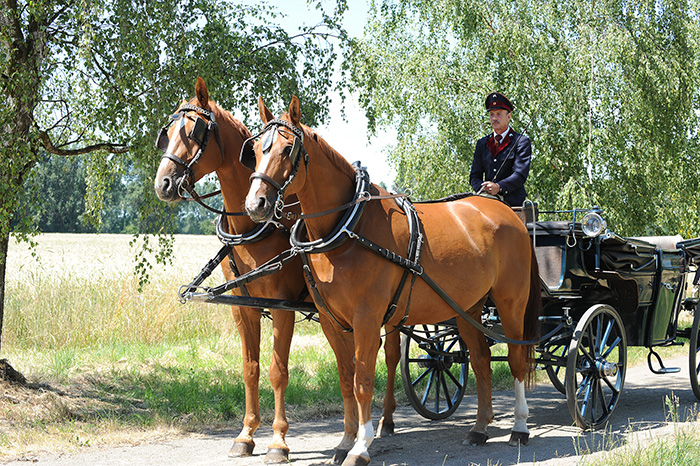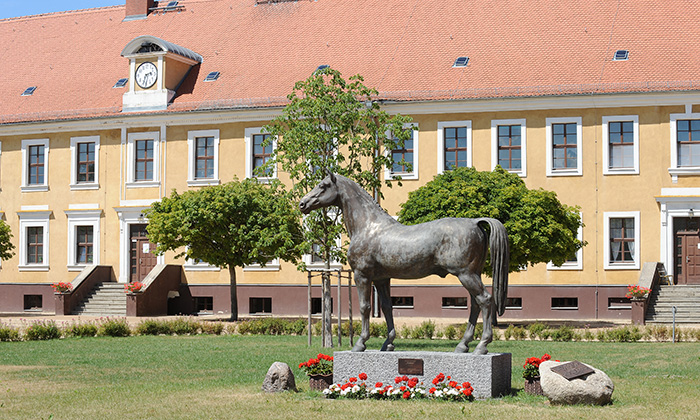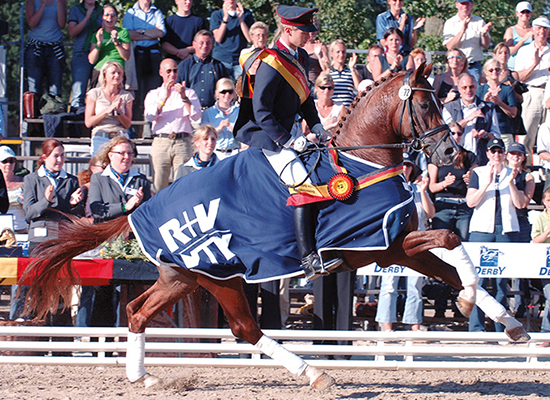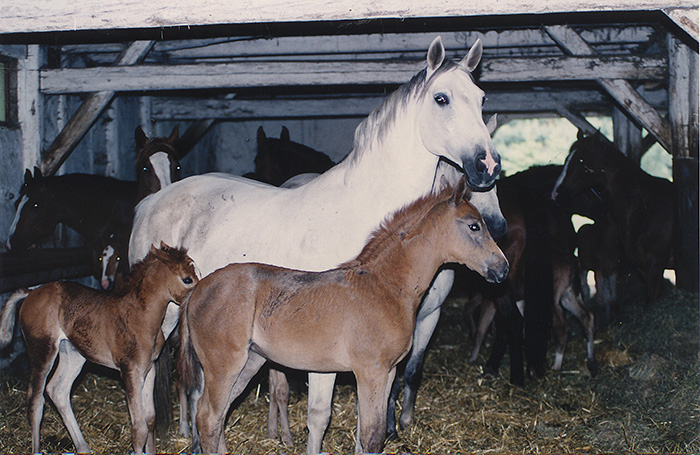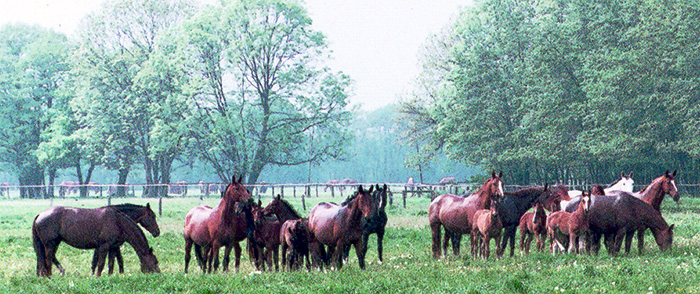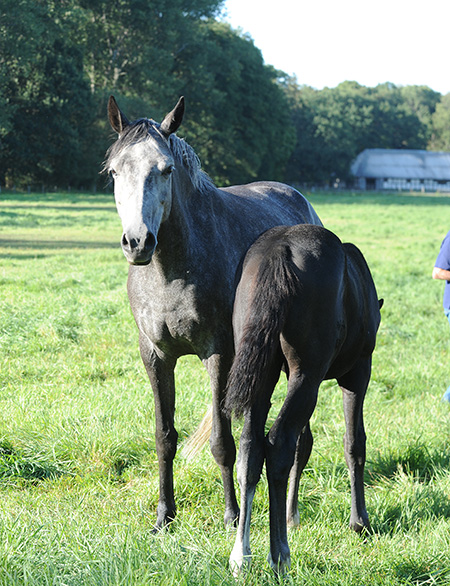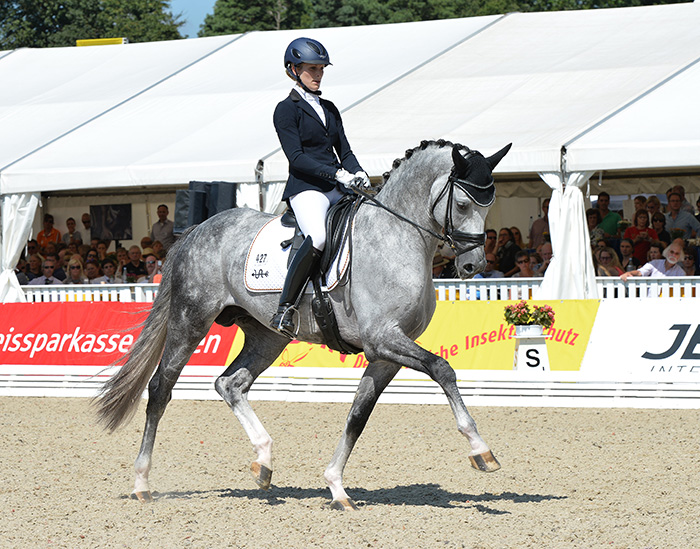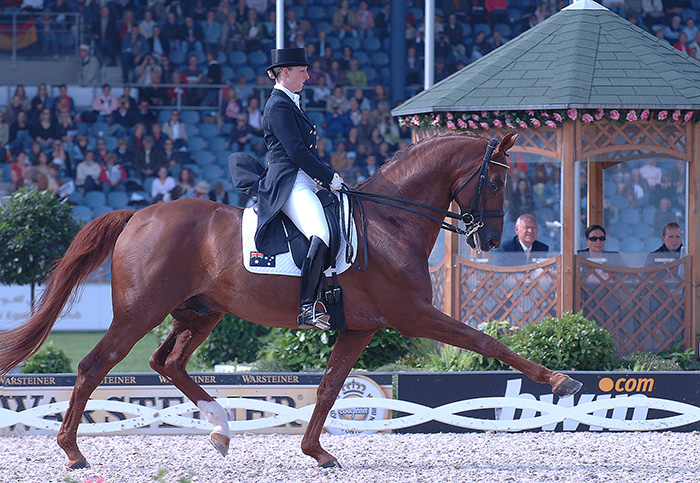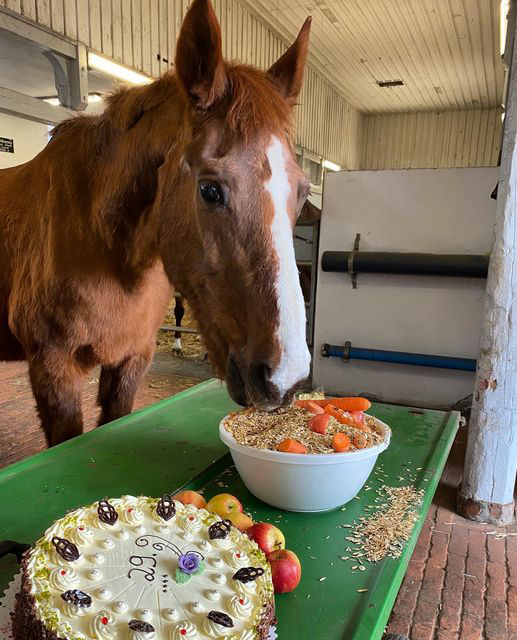
Let us celebrate one of the greatest mares in modern dressage breeding history – Poesie. But her success and the success of the ‘P’ line is also the story of one of the great visionaries of the breeding world, Dr Jürgen Müller.
I first met Dr Müller in 1989. It was a wild time. The Berlin Wall has just come down, and the Stud at Neustadt-Dosse coming out of the insolation that had been East Germany. It also caused Roz and I to burst out laughing, looking up at the beautiful building and seeing the date of its foundation, 1788 – yes, the year Governor Phillip established the colony that was to become Australia.
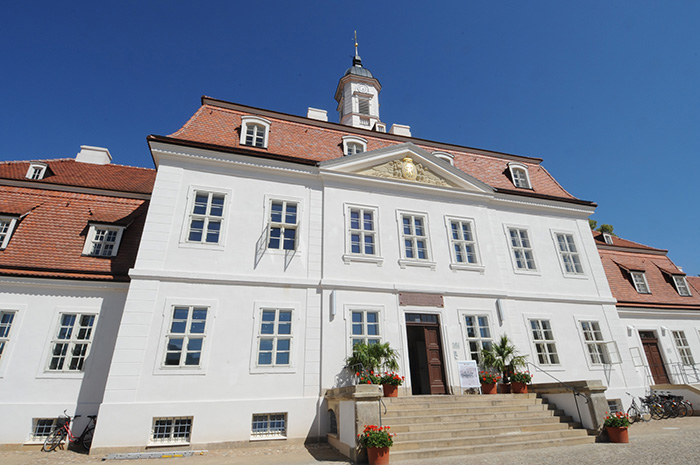
The last time I visited was in 2014, in the year of Dr Müller’s retirement, but what a legacy the master breeder left…
When you started out as the director here at Neustadt-Dosse, you were the youngest landstallmeister in Germany, now I believe you are the most senior, and your stud has gone from one of the poorest to one of the most magnificent…
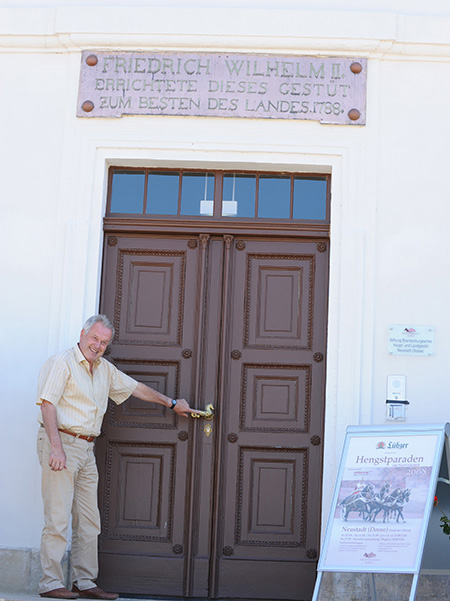
“I started my career here in 1975, I was 29 years old. We were at this time in the GDR, the centre for horse exporting. In one year we sold between 500 and 600 horses from three to eight years old, many of them, about 80% went to the ‘other’ part of Germany. Now we have a new time, we have taken some new stallions from the other part of Germany, and we have been very successful. I think perhaps our greatest success was winning the World Championships with Poetin, then she was sold for €2,500,000 to Mr Schockemöhle, that was another success for us. Our stud is now very respected in Germany and internationally.”
Poetin and Hans Heinrich Meyer zu Strohen winning at the Bundeschampionate
Visitors can now take a tour of the stud in a carriage
“It was turned into a foundation in 2001 so it was possible to receive a grant from the European Community for re-construction, and new buildings. Over five years, we used €40,000,000 – it was a very nice time.”
The State Stud at Neustadt Dosse was founded in 1788 by the Prussian King and the stud has been breeding horses since then, but now is a World Heritage site and has 50,000-60,000 visitors a year…
One of the great successes stories has been the success of the P line:
“This a very traditional line. The first mare was Paulina, we bred with this line for many years, she was born in 1937 – it is our well-known ‘P’ line that produced Poetin and Quaterback. The grandfather is a Holstein stallion, Expo’se, and this stallion was ridden very well by Mr Flamm (Christian Flamm who was stud rider), successful to Intermediate I & II. So we have a little bit of jumping in this mother line, and I think that is
very successful.”
Quaterback and Christian Flamm winning at the Bundeschampionat with a canter for a score of 10
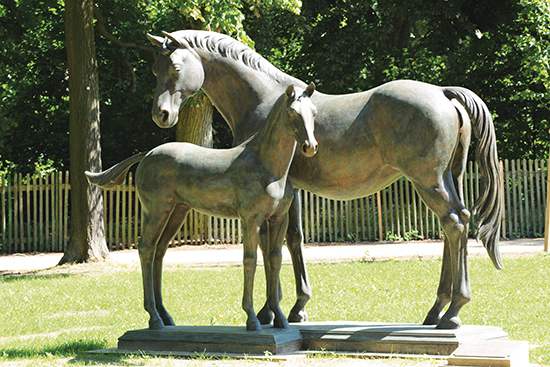
Celebrated – Poesie and her daughter, Poetin
You were one of the first to use Sandro Hit, and Poetin was the first really famous foal of Sandro Hit, looking at it now, was Sandro Hit a good thing, or a bad thing?
“Poetin was born in 1997, and at this time, I think Sandro Hit was a good thing, but now Sandro Hit is in the second and third generation, and I think that is enough – I don’t think we need him in our program now. The offspring are difficult to ride, but we have a very good mother line. Sandro Hit was a bit crazy, but we have a filter, our mother line is very good in its temperament… At the time Sandro Hit was a good combination with our mares, but that was ten years ago, and now we have other good stallions, and we need horses with a good rideability, three good gaits – especially walk. And with Sandro Hit we never have a good walk!”
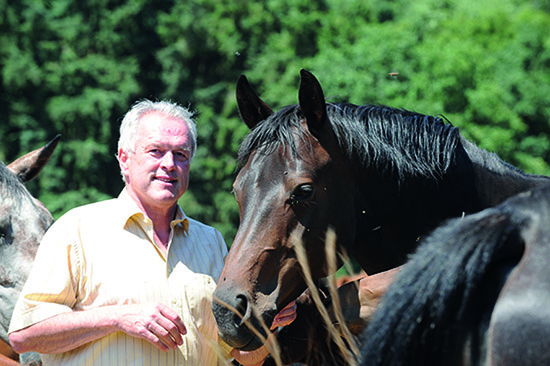
Poetin II and Dr Müller
So which has been the most successful stallion for you? Sandro Hit?
“Yes, Sandro Hit with Poetin, it was very successful. We now have five full brothers of Poetin, Samba Hit, I to V. And we have four Poetins, II to IV (The World Young Dressage horse champion, Poetin I sadly died after first being sold to Paul Schockemöhle, then to Holland and finally to France). Poetin III will go to the Bundeschampionate. She has won the Mares’ Performance Test, and the highest marks in the stud book inspection so we are very hopeful she will do well.”
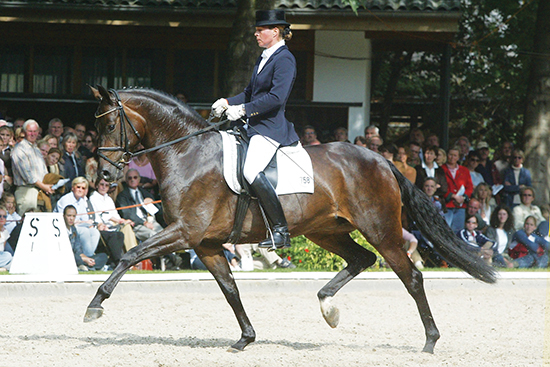
Poetin I with Kathrin Meyer zu Strohen at the Bundeschampionate
The breeding of the Poetins, the Sambas and for that matter, Quaterback, is an example of just how crucially important those mare families are, and much of the modern day success at Neustadt, stems from a mare that used to work the fields…
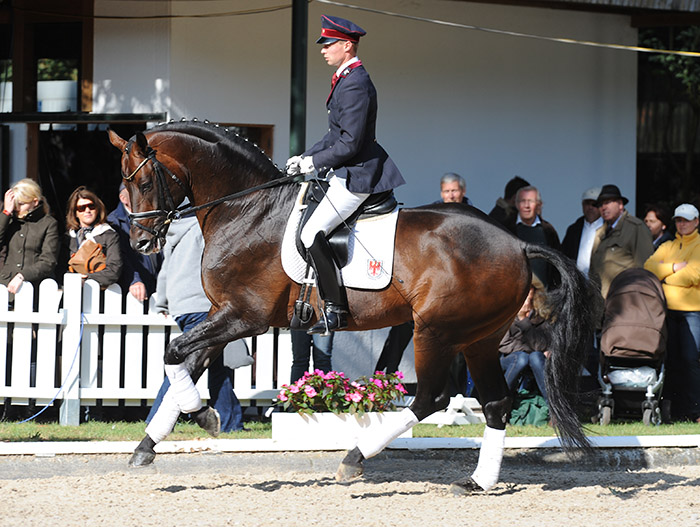
Samba Hit, another from the famous line…
The establishment of the famous ‘P’ Line
“The founding mare, Pauline was born in 1937 and we have been very successful with this bloodline. After the Second World War, all our horses went out of the stud, on to a train and to Moscow. We had not a horse… but Pauline was privately owned by a very successful local farmer. Gustav Condereit, who was the leader of the stud after the Second World War bought her for the stud. She was from an old family of horses from this area – agricultural horses, not riding horses. It was a long process, breeding the agricultural horses to the modern stallions but now we have much success with riding horses from this family.”
Some of the Neustadt mare band in their stable for the night on our first visit to Neustadt in 1989
“We bought Pauline from the farmer in 1946, he used her in harness. She was by Charleton, a Brandenburger with a little part of Trakehner. Her daughter Palette was born in 1949, by Fernab, a grandson of the Hanoverian, Feiner Kerl. Palette, bred to another Hanoverian, Duo, a son of Duellant, produced Palmira in 1959 and in 1968, she foaled Pollick II by Ipikur – a stallion from Russia. This stallion was travelling with a circus, he was a very nice stallion, chestnut, and my predecessor bought him. He was a good mover and he made a very nice show in the circus. Panik was also a very good mare, very good performance mare. She was bred to Adept who was imported from Hannover, he was by Archimedes, a son of Abglanz. He was a very nice bay stallion, good mover – not so good in the legs, but a very nice head. He produced many licensed stallions and good mares for us. With Panik, he produced Parabel I and Parabel II and they founded a line for us.”
Mares and foals outside for the day in 1989
“Parabel I was bred to Frühlingsbote, he was a stallion from Westfalia, by Frühlingsball, and the dam sire was Damhirsch. That produced Pamina (a very good harness mare who was part of the 20 horse coaching team) who when bred to Sandro Hit, produced Pirouette in 1998. She was bred to Exposé, and produced Philharmonie (pic below) in 2004.”
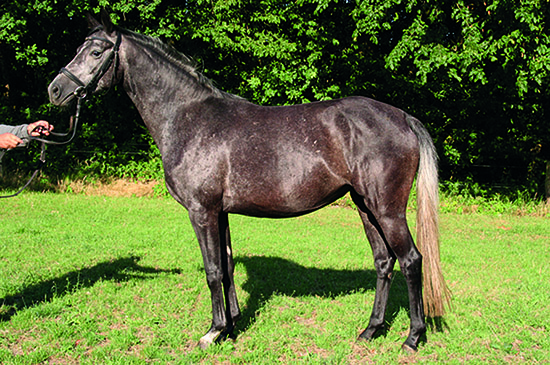
and Philharmonie and her son Belantis, by Benetton Dream, as a foal
Belantis competing at the World Young Horse Championships at Verden
“The other Parabel line, the one from Parabel II, also a daughter of Adept, a good coach mare, but also a good riding mare, begins with Sekurit from the Semper Idem line crossed with Duellant – on both sides of his pedigree, the same cross, grandsons of Senator out of grand-daughters of Duellant. This produced Parabiose in 1984 – this mare was bred to Gotland who was by the Gotthard son, Goldstein (out of a Steinpilz mare) out of a Pik König / Ferdinand mare, and produced Primadonna.”
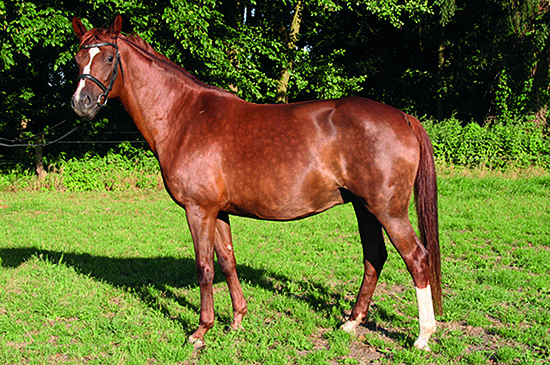
Passionata – the dam of Quaterback
And Primadonna leads to both the Poetins and Quaterback…
“Primadonna is one of our best mares. She died in April 2008, after the birth of her last foal, Poesie III. Poesie I bred to Diamond Hit, produced Piccola in 2001 – and Piccola has adopted the foal, Poesie III, after Primadonna’s death, and she is raising it with her own foal by Lord Fantastic.”
It was with the Hanoverian stallion, Brentano II (a son of the dressage sire, Bolero) that Primadonna produced Poesie, who in turn produced a series of foals that will go down in history:
“Poesie I, was bred to Brandenburg, an Oldenburg stallion by the Dutch stallion, Beach Boy, who was by the Anglo-Arab, Zeus, out of a Hanoverian mare by Wendekreis, to produce Passionata in 1996, and Passionata bred to Quaterman, produced Quaterback.
Quando Quando and Kristy Oatley Nist competing at the 2006 WEG for Australia
Quaterman is a product of Quando-Quando’s time at Neustadt and he is out of a mare by the Holsteiner, Roccodero, by Rocco – this is not the licensing winner, Rocadero by Ronald.”
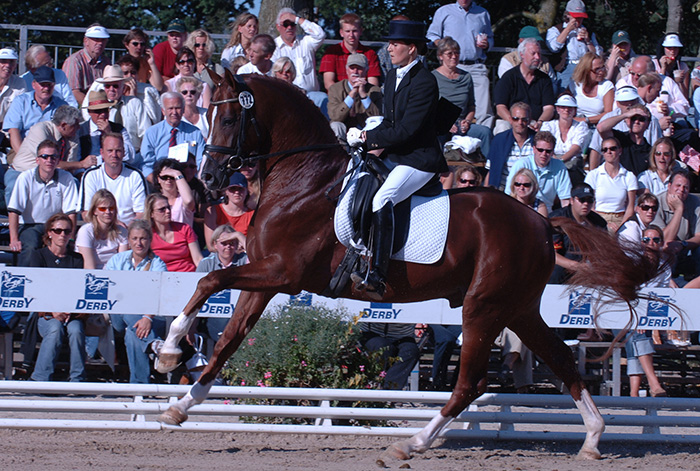
Quaterback winning at the Bundeschampionate
And of course, bred to Sandro Hit, Poesie produced the Poetins and the Samba Hits…
